Effective user communication for open source development
A presentation at OW2Con in in Paris, France by Ruth Cheesley

Effective user communication for open source development OW2Con Paris, 17-18 June 2025 @RCheesley
Good afternoon, everyone. Thank you for joining this workshop on effective user communication for open source projects. Over the next 20 minutes, we’ll explore practical strategies to better engage with your users and transform that engagement into meaningful contributions to both your product and community.
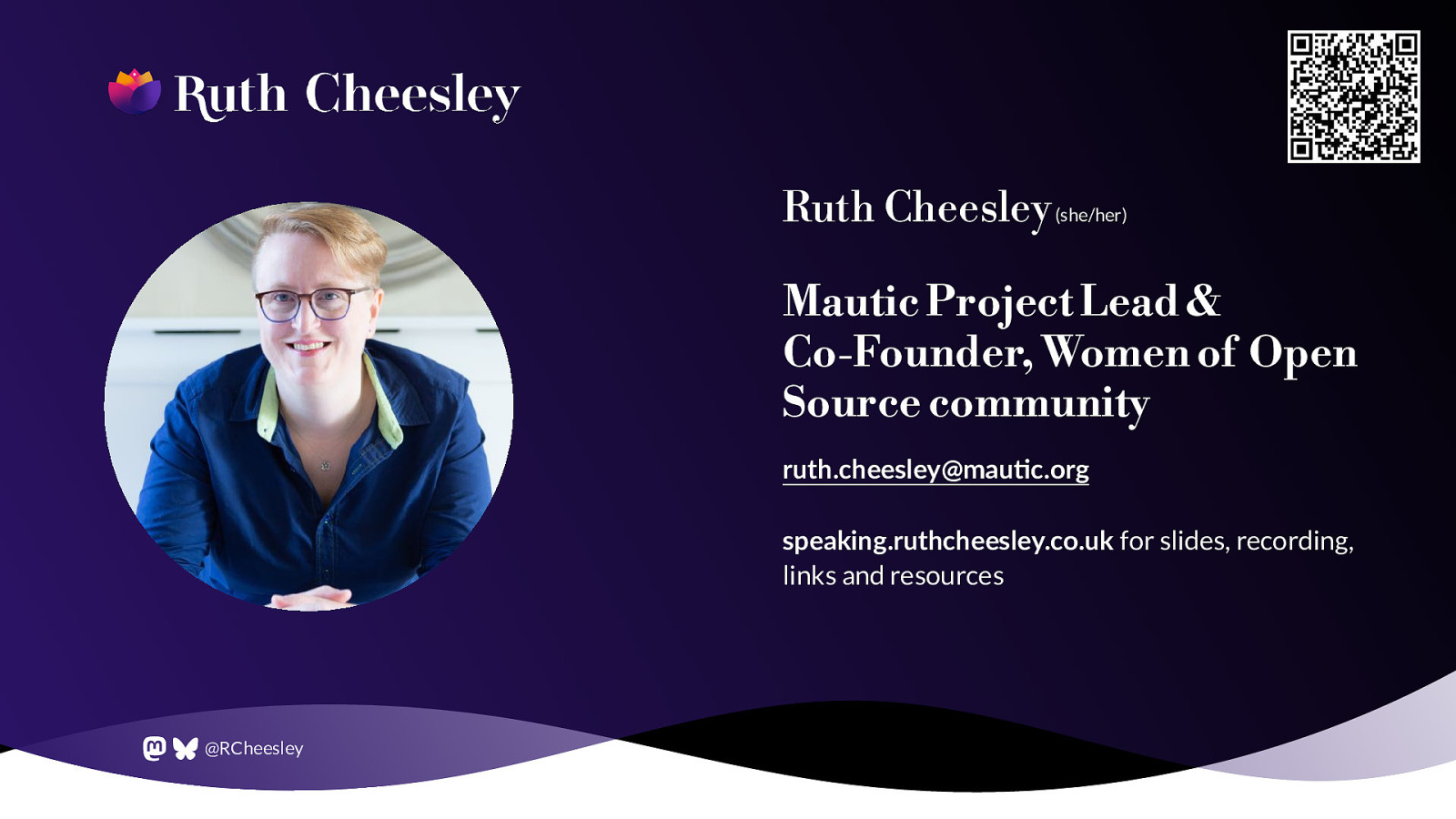
Ruth Cheesley (she/her) Mautic Project Lead & Co-Founder, Women of Open Source community ruth.cheesley@mautic.org
speaking.ruthcheesley.co.uk for slides, recording, links and resources
@RCheesley
My name is Ruth Cheesley, my pronouns are she/her and I live in the UK in a town called Ipswich, about an hour north east of London in the bit that sticks out the side of the UK in the east! I work as project lead for the Mautic open source marketing automation project, and I’m also co-founder of a wonderful community, the women of open source community. Please feel free to connect with me on social media, the QR goes to my LinkedIn, I promise it’s not a rickroll! ti As maintainers, we often focus intensely on the technical aspects of our projects—the code, the architecture, the performance. But today, we’ll discuss how communication might be your most powerful tool for project growth.
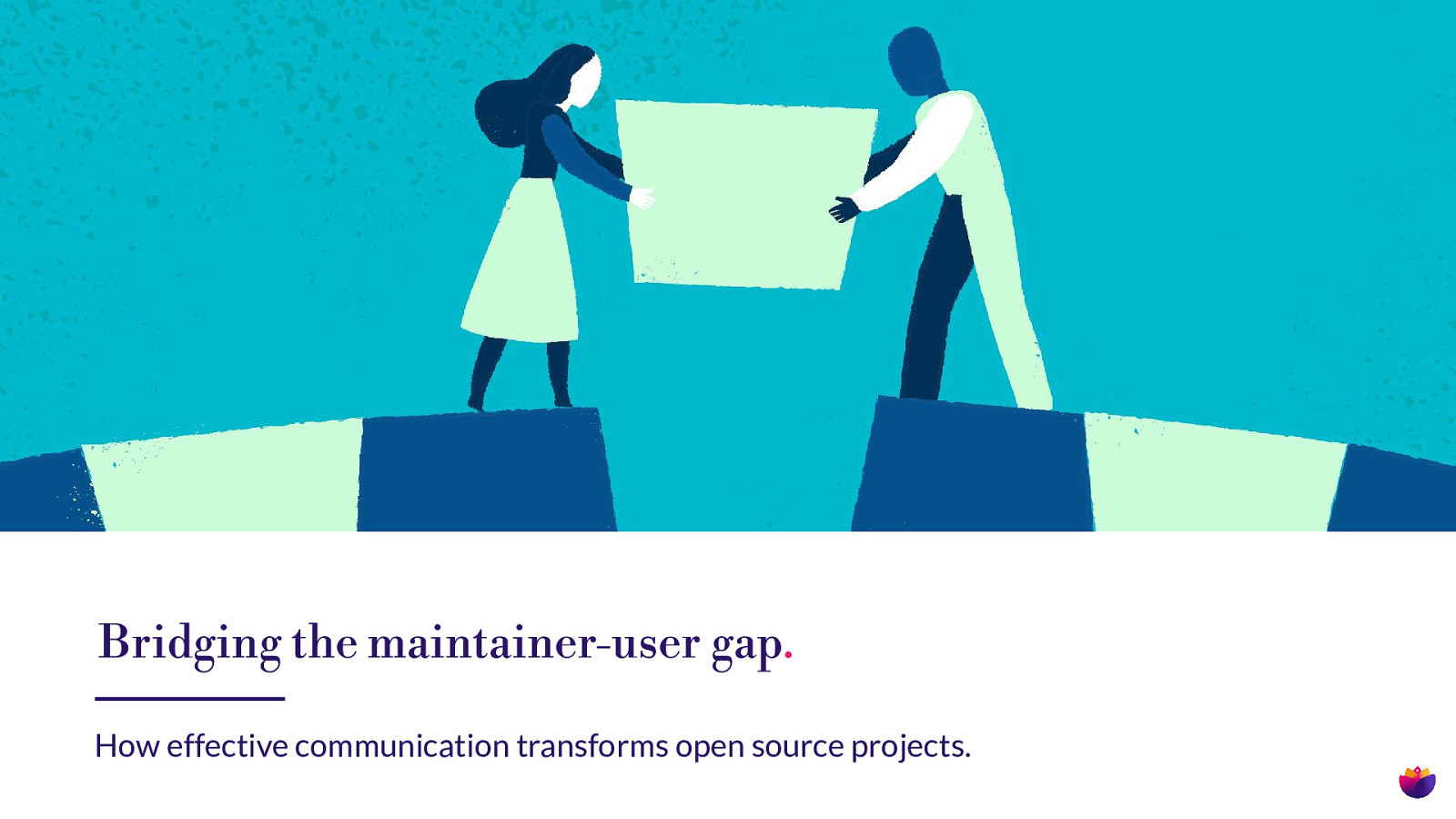
Bridging the maintainer-user gap. How effective communication transforms open source projects.
There’s often a gap between maintainers and users. We speak in pull requests and commits; users speak in features and problems. Bridging this gap is essential for sustainable project growth. The most successful open source projects aren’t necessarily those with the best code, but those that excel at turning users into participants in your journey. That transformation begins with intentional communication.
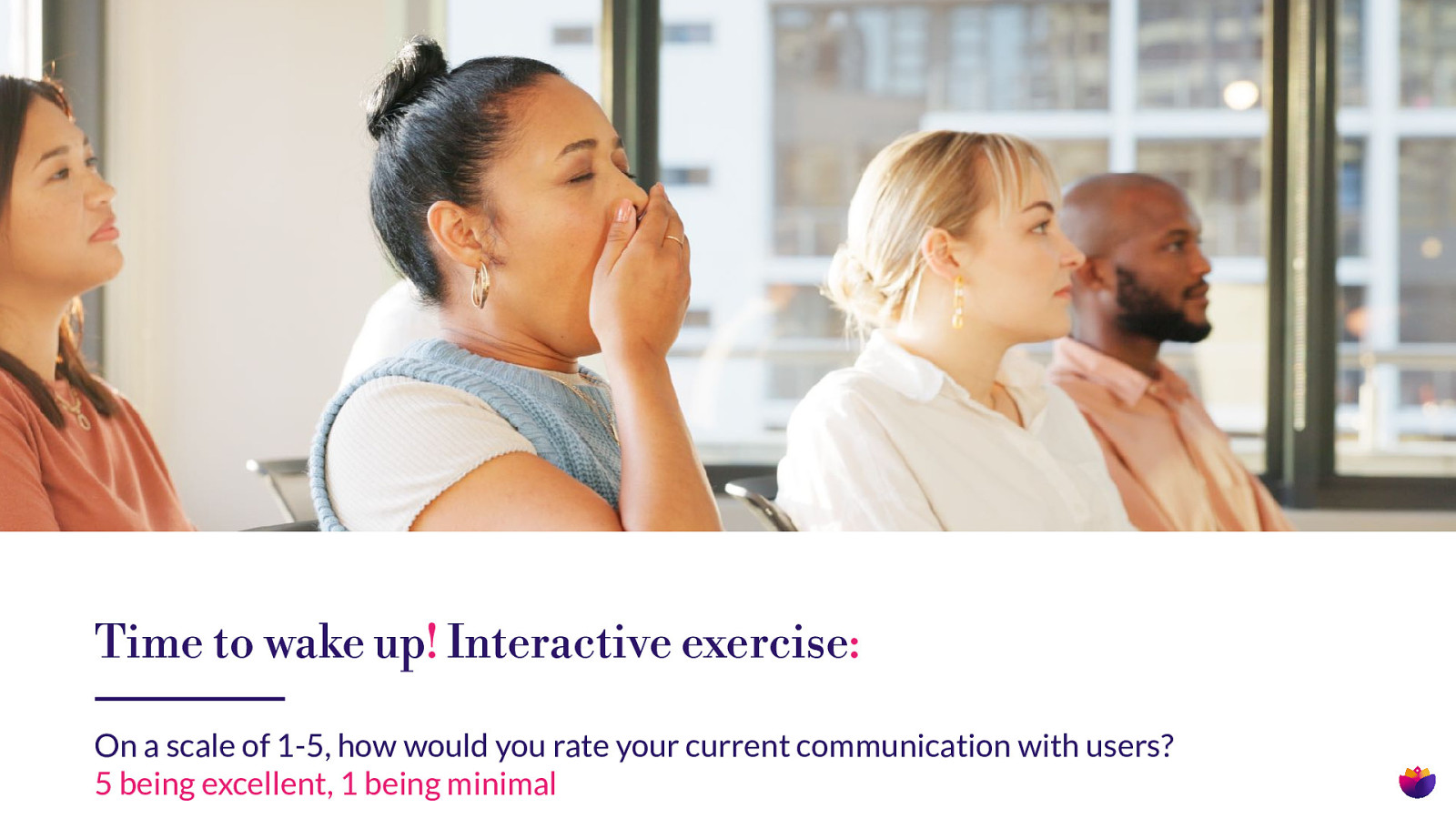
Time to wake up! Interactive exercise: On a scale of 1-5, how would you rate your current communication with users? 5 being excellent, 1 being minimal I’d like you to quickly think about your own project. On a scale of 1-5, how would you rate your current communication with users? 5 being excellent, 1 being minimal.
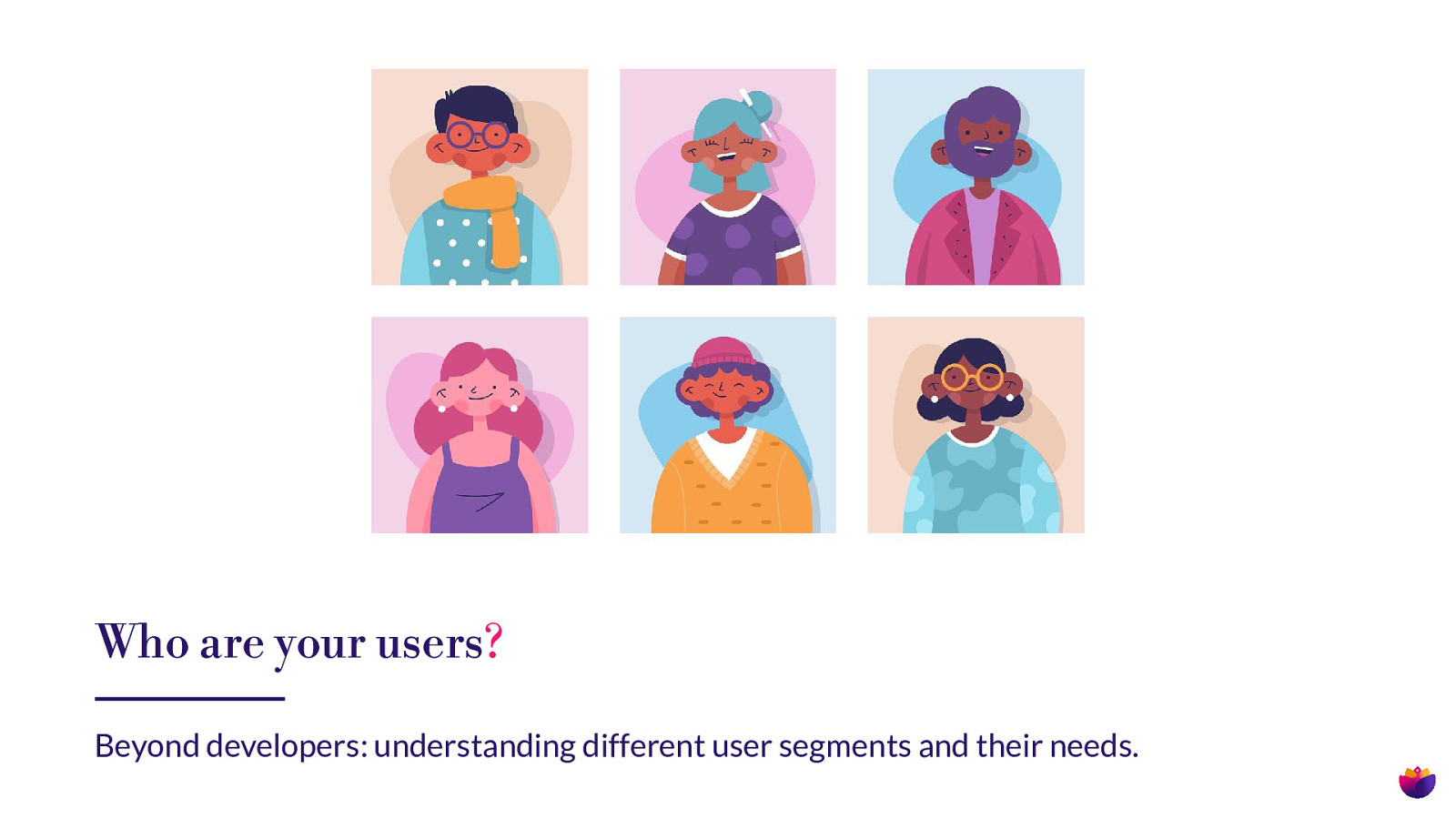
Who are your users? Beyond developers: understanding different user segments and their needs. Before we can build products users love, we need to understand their actual needs, not just what they tell us is broken with our project via GitHub issues. Effective open source projects use a range of research approaches: user interviews give depth, surveys give breadth, and usage analytics provide behavioural insights. Consider lightweight approaches like 30-minute user interviews, community of ce hours where users demonstrate how they’re using your product, or regular ‘how are you using our project’ threads. Perhaps consider blocking out an hour once a week speci cally for these kinds of calls - it also brings you closer to you users and helps to build meaningful relationships. fi fi These research methods are essential for open source projects aiming to solve real problems rather than interesting technical challenges.

Still with me? Interactive exercise: Can you identify one assumption you’ve made about your users that you’ve never actually veri ed. How might you test it? Take 30 seconds to identify one assumption you’ve made about your users that you’ve never actually veri ed. How might you test it? fi fi fl This user research serves dual purposes: it directly improves your product while creating marketing content - case studies, testimonials, and usage examples come directly from these conversations and can help to drive the ywheel of user adoption.
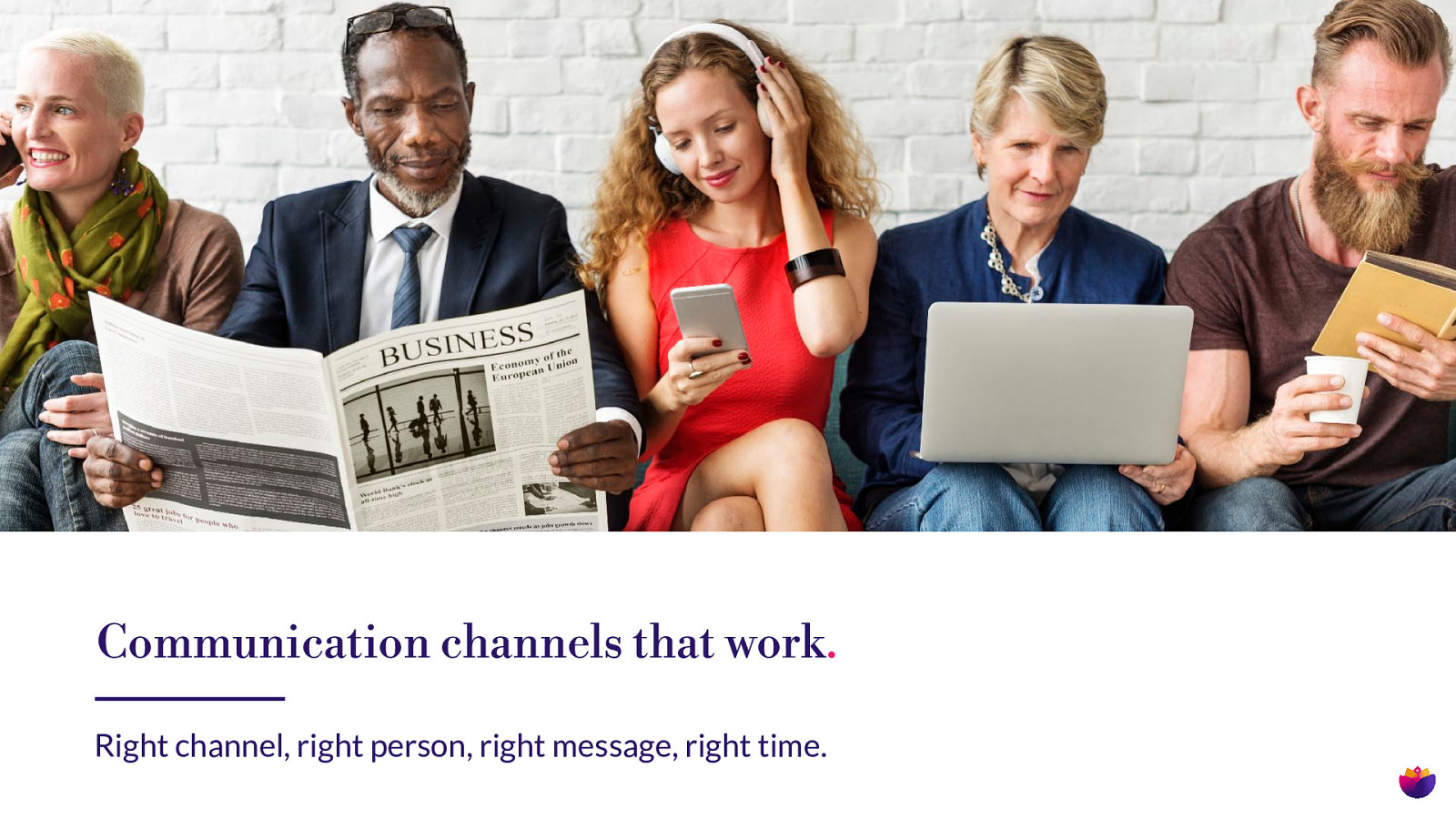
Communication channels that work. Right channel, right person, right message, right time. Now, let’s talk about where these conversations happen. Different users prefer different channels, and effective communication means meeting users where they are. Technical users might be comfortable with GitHub discussions, while others might nd that intimidating. Some prefer real-time chat in Discord or Slack, while others engage better with asynchronous formats like forums or mailing lists. The key is in identifying 2-3 channels where your speci c users already gather and nding ways you can better engage with them there. For most projects, I recommend: fi fi A technical channel for development discussions A community channel for broader engagement and support A broadcast channel like a newsletter for announcements and updates fi • • •
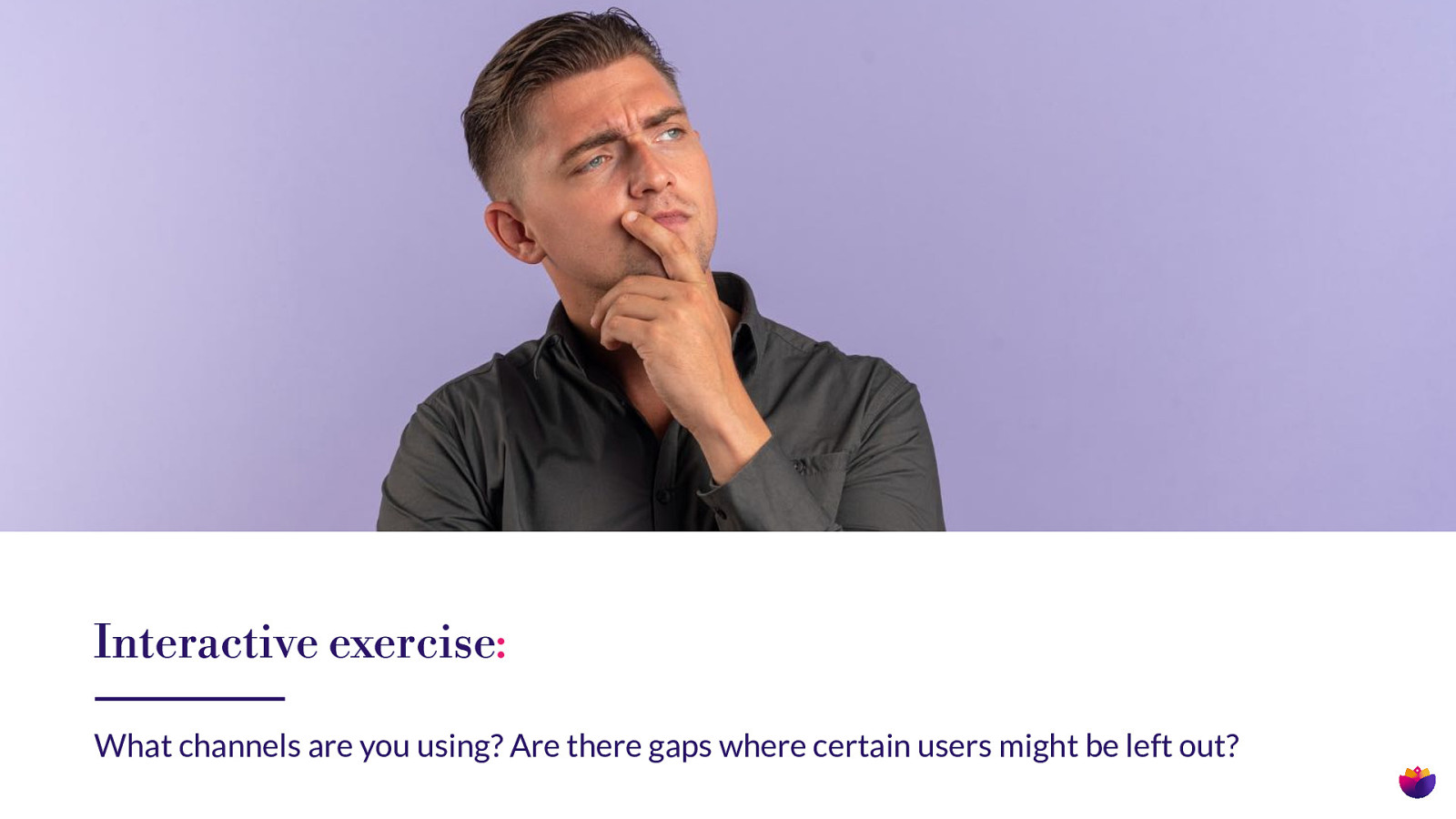
Interactive exercise: What channels are you using? Are there gaps where certain users might be left out? Which channels are you currently using? Are there any gaps where certain user types might be left out? Think particularly about whether your channels are accessible to everyone who might want to use your project. Remember, the goal isn’t just disseminating information. We also want to be ensuring that we’re creating opportunities for dialogue.
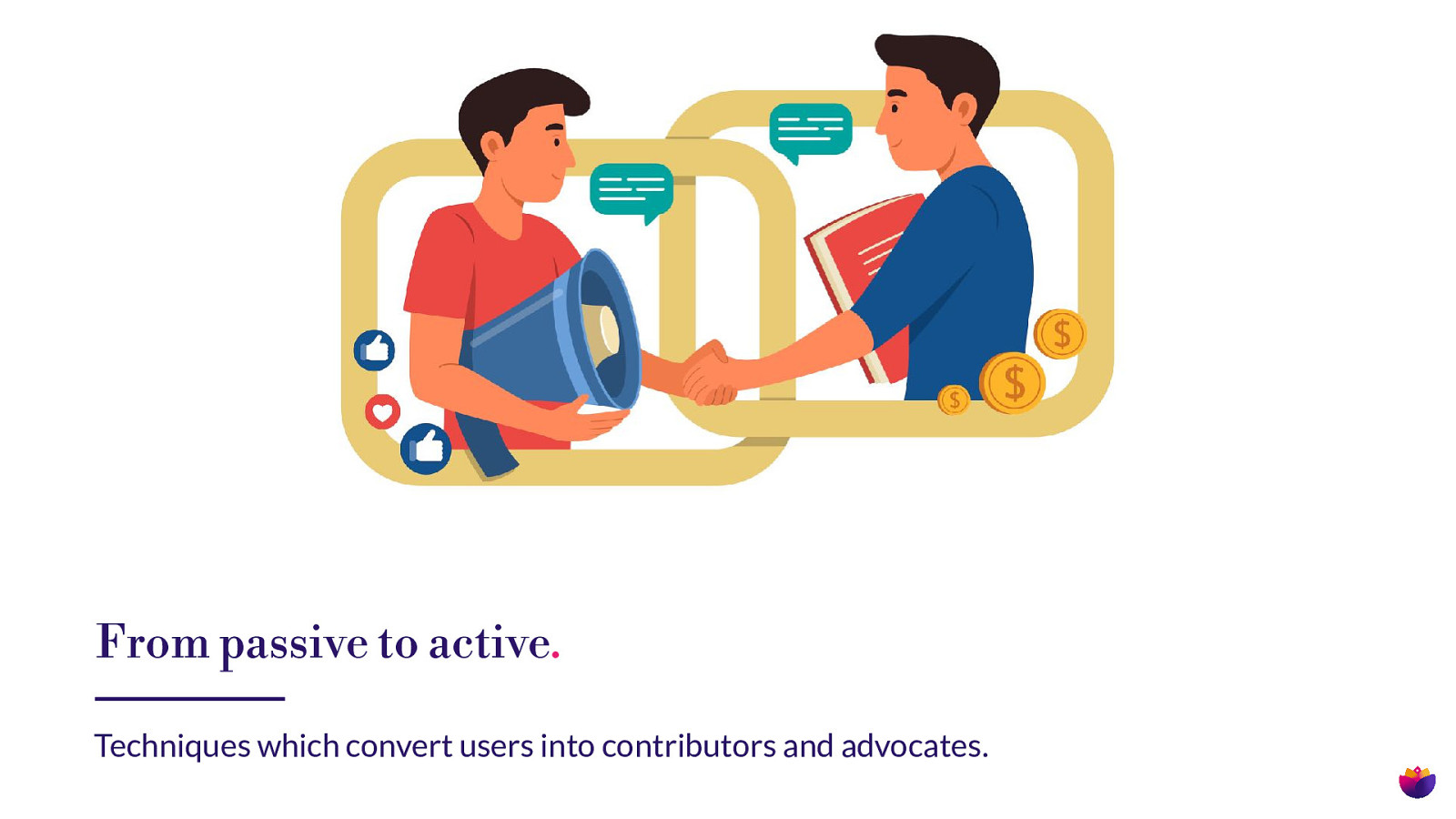
From passive to active. Techniques which convert users into contributors and advocates. Most users begin as passive consumers of your project. Your communication strategy should create a clear path to deeper engagement. Consider the journey: Users start by using your software. With the right communication, some will provide feedback or participate in research. A subset will become more involved in product discussions. Others may contribute documentation or code. The key is making each step obvious. Be explicit about how users can get involved at different levels. Not everyone wants to contribute code, but many users are happy to share their experiences or participate in testing if properly invited.
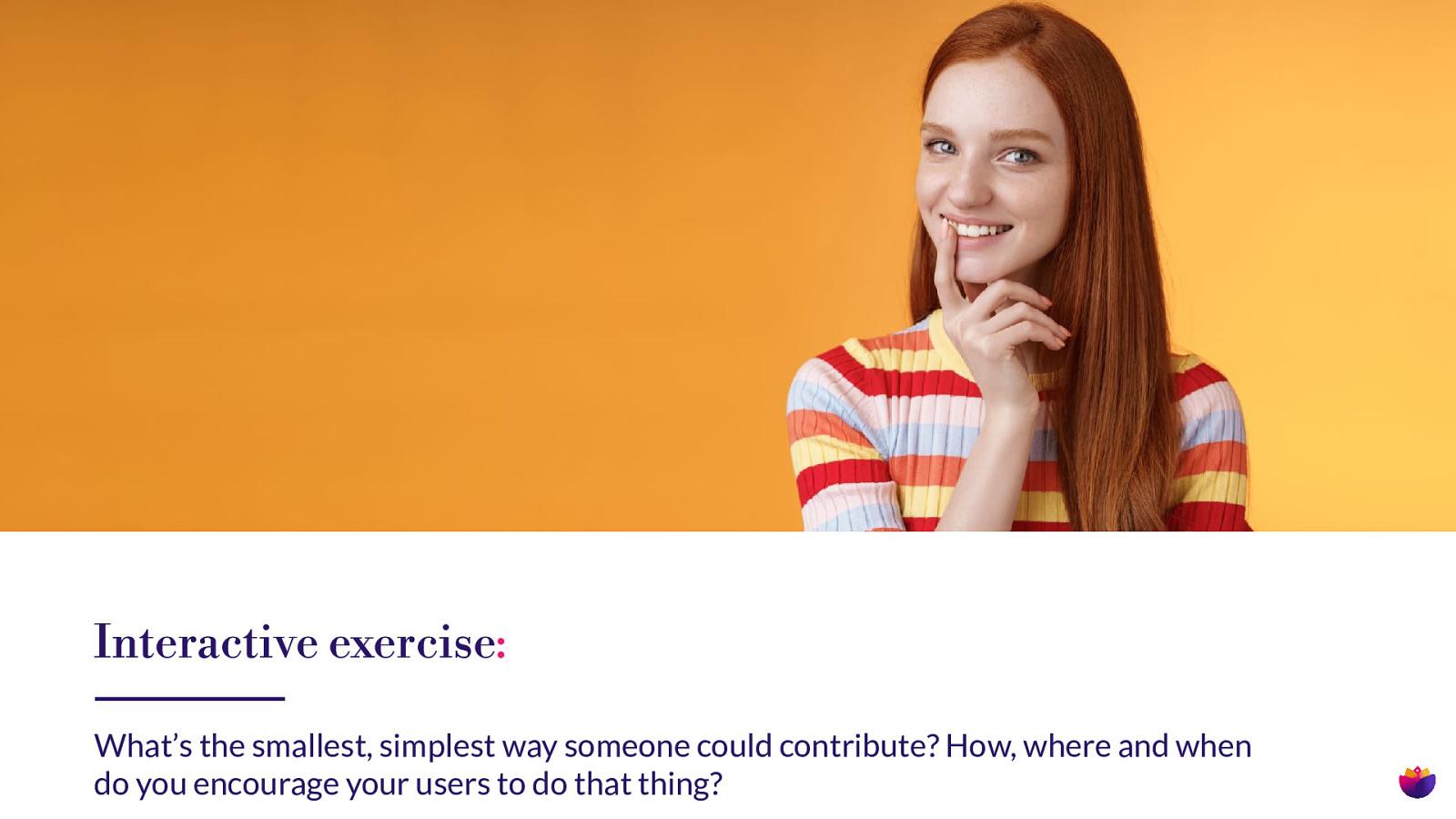
Interactive exercise: What’s the smallest, simplest way someone could contribute? How, where and when do you encourage your users to do that thing? Think about your project’s involvement ladder. What’s the smallest, simplest way someone could provide input? Is that opportunity clearly communicated? If your goal is revenue generation this might be contributing to your project nancially. If it’s driving contribution it could be things like working on a good rst issue. If it’s around adoption, it could be sharing about your project with the wider world. Take 30 seconds to consider one way you could lower the barrier to participation. [Pause for 30 seconds] fi fi Remember, people won’t get involved if they don’t know how or think their input isn’t valuable. Effective communication makes it clear that all forms of participation, from feature suggestions to use case sharing, help shape your project’s future.
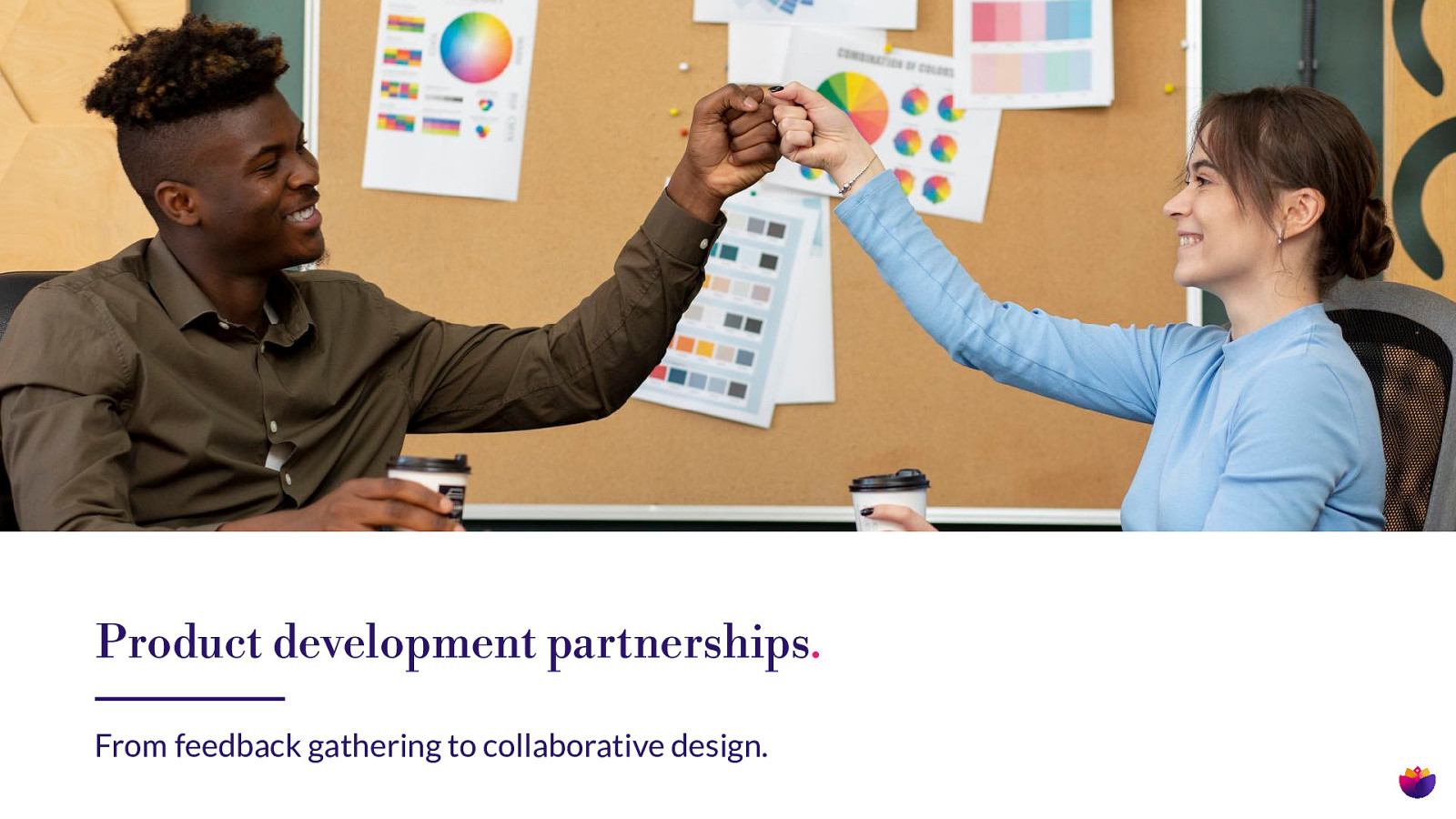
Product development partnerships. From feedback gathering to collaborative design. Moving beyond passive feedback collection, leading open source projects establish true product development partnerships with users. Consider creating a user advisory group that meets monthly to discuss roadmap priorities. Run collaborative design sessions where users sketch solutions alongside maintainers. Techniques like conducting focus groups can help understand the underlying problems users are solving with your project. Feature prioritization exercises with community voting make roadmap planning transparent and user-driven.

Interactive exercise: Think of a product decision you made which would have bene tted from user involvement. How could you involve more users next time? Interactive moment: What’s one product decision you’ve recently made that would have bene ted from direct user involvement? How might you involve users in a similar decision next time? fi These collaborative approaches not only yield better product decisions but create powerful marketing narratives about how your project listens and responds to community needs. Your development process itself becomes a marketing advantage that distinguishes your project from less responsive alternatives.

Public by default as a marketing opportunity. Transparent development practices naturally invite participation. Open source thrives on transparency. Public decision-making transforms passive users into engaged stakeholders. Consider developing in the open through RFC processes, public roadmaps, and decision logs. Even early-stage ideas can be shared as GitHub discussions to gather input before signi cant investment. fi This approach yields better technical decisions and creates natural opportunities for users to become collaborators. When someone sees your thinking process, they’re more likely to contribute meaningfully to the solution.

Interactive exercise: Is there a decision you’re making privately which could bene t from public involvement? Where could you bring more transparency? Interactive exercise: Is there a decision you’re currently making privately that could bene t from public input? Take a moment to identify one aspect of your project that could be more transparent. [Pause for 30 seconds] fi Public-by-default doesn’t mean design-by-committee. As maintainers, you still guide the project vision. But bringing users into the process earlier creates opportunities for collaboration rather than after-the-fact criticism.
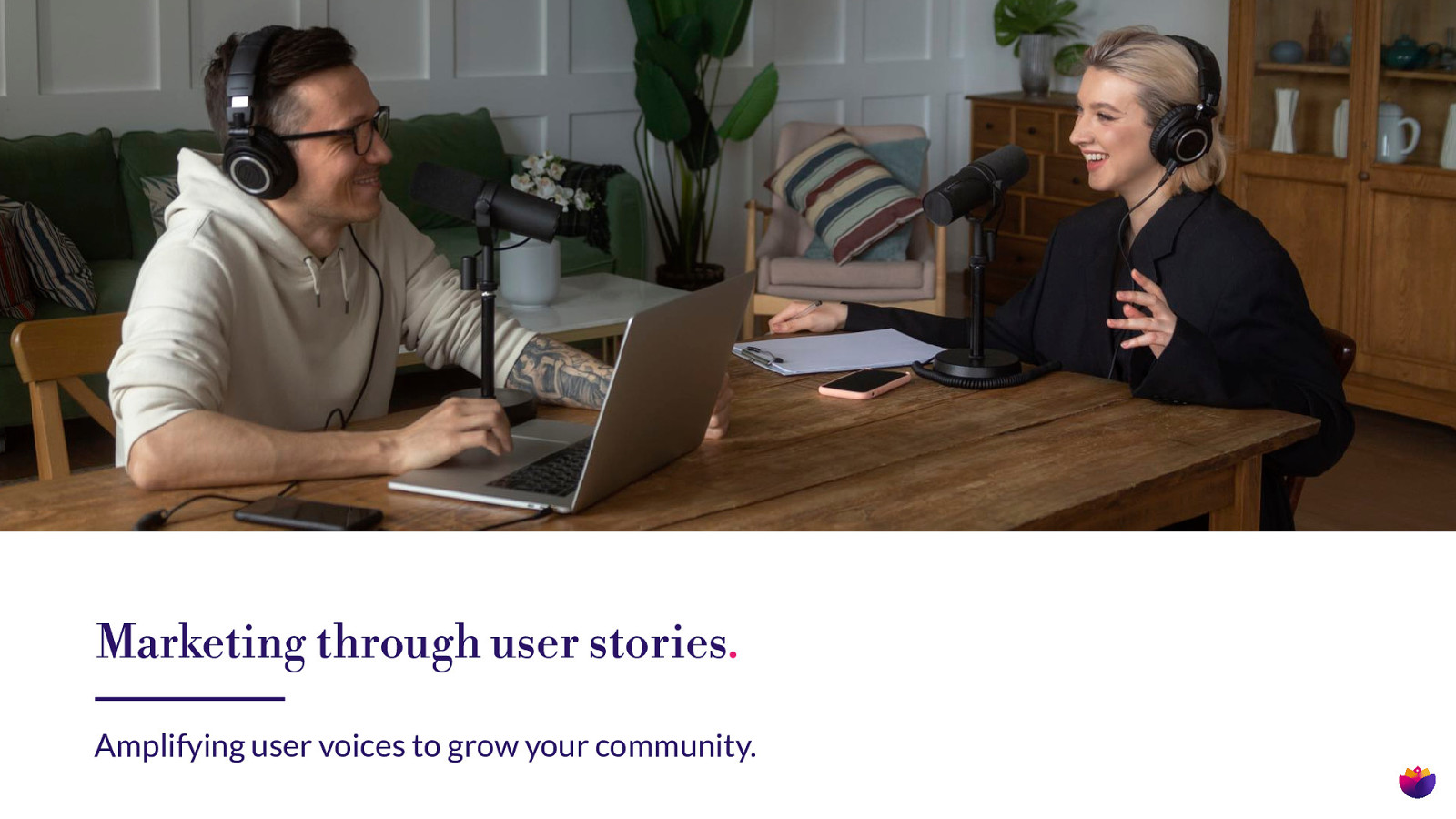
Marketing through user stories. Amplifying user voices to grow your community. Marketing open source projects isn’t about ashy campaigns but more about amplifying authentic user experiences. Each user interaction is an opportunity to generate compelling content that attracts similar users who might go on to be your best customers. Create a systematic approach to capturing user stories: brief case studies highlighting problems solved, video testimonials from community calls, or ‘built with’ showcases. Documentation of real-world implementations becomes powerful marketing collateral. fi fl The key is connecting user involvement directly to your growth strategy. When users see others like them successfully using your project, adoption barriers lower signi cantly.
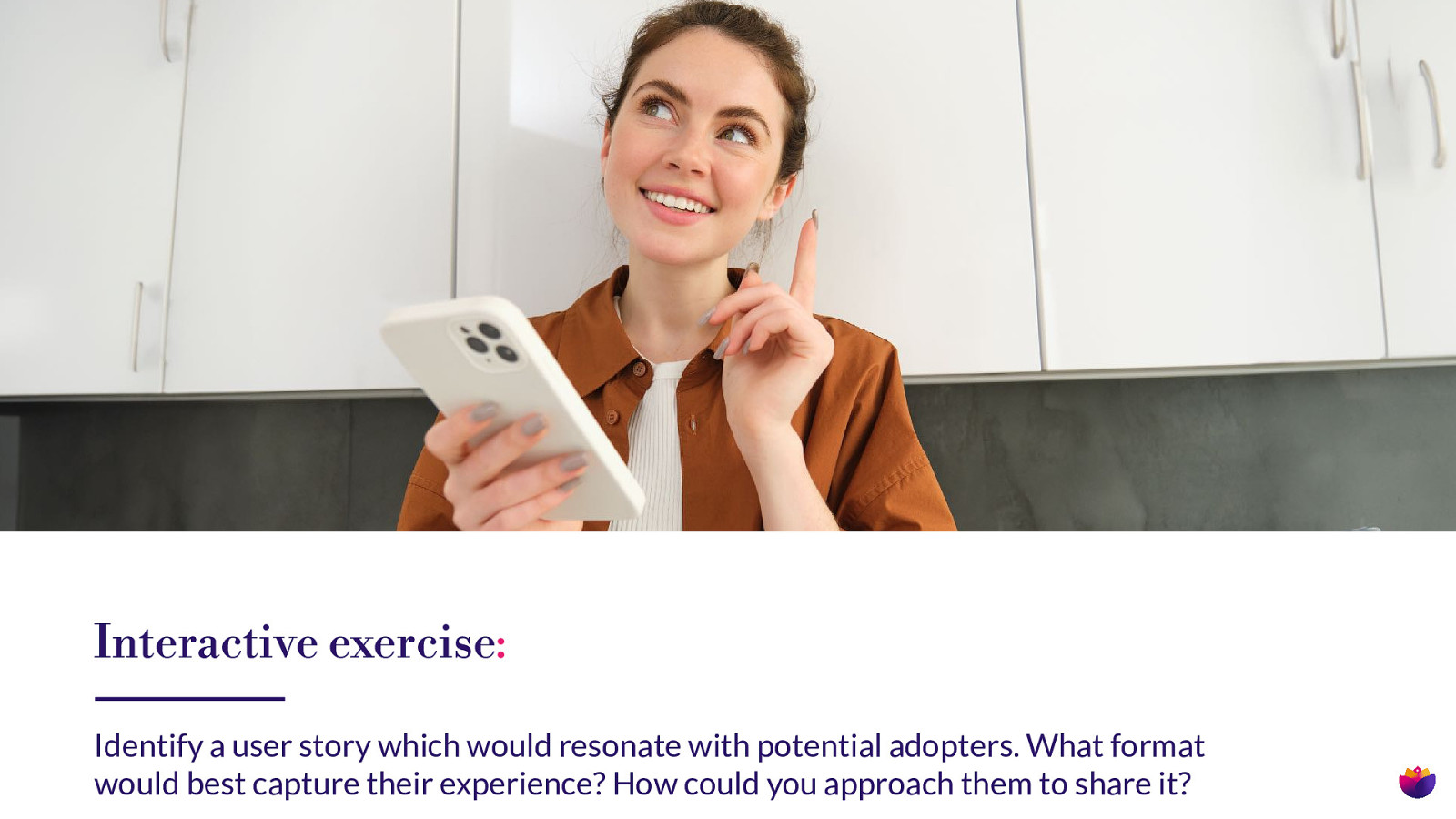
Interactive exercise: Identify a user story which would resonate with potential adopters. What format would best capture their experience? How could you approach them to share it? Interactive exercise: Identify one current user whose story would resonate with potential adopters. What format would best capture their experience? How might you approach them to share it? This approach creates a virtuous cycle: marketing attracts new users, who become involved in product development, which generates new marketing stories - all while building a product that genuinely meets user needs.

Your communication action plan. Three high-impact strategies for you to implement right away. Let’s conclude with practical next steps. I encourage you to commit to three communication improvements: First, audit your current channels for accessibility and completeness. Are there user segments you’re missing? Are your channels accessible to people with disabilities? Second, implement one new feedback collection mechanism in your next release. This could be as simple as a feedback template or as involved as a community call. Third, create a simple template to make user contributions that will help you with marketing your project more straightforward. Remove the guesswork from participation.
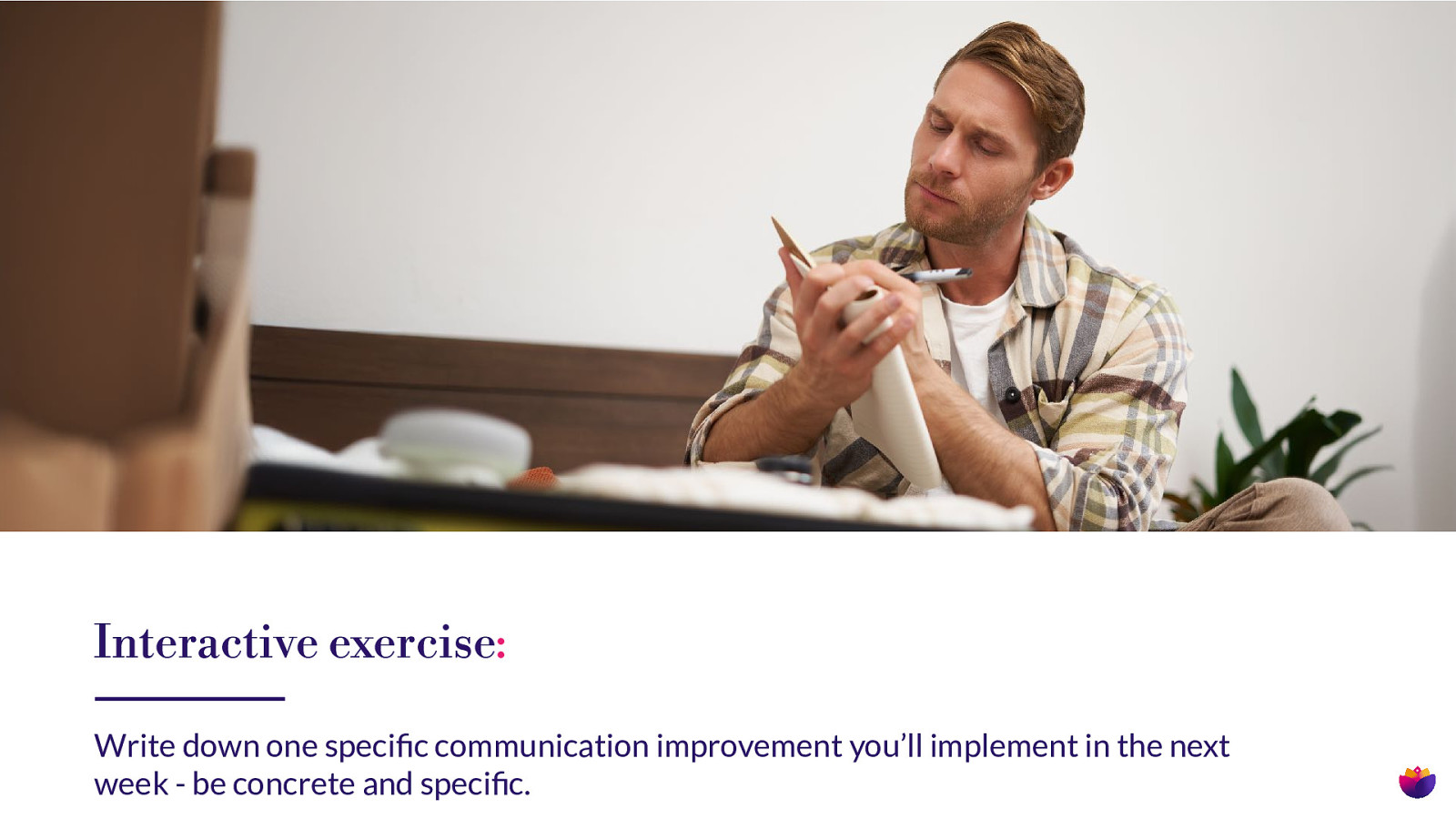
Interactive exercise: Write down one speci c communication improvement you’ll implement in the next week - be concrete and speci c. Final interactive exercise: Take a minute to write down one speci c communication improvement you’ll implement in the next week. Be concrete - what exactly will you do? [Pause for one minute] Would anyone like to share what they’ve committed to? [Take 2-3 volunteers if time permits] Effective communication isn’t about broadcasting - it’s about creating dialogue that turns users into partners in your project’s development. The techniques we’ve discussed today don’t require massive resources - just intentional shifts in how you connect with your users. fi fi fi By understanding who your users are, meeting them where they are, creating clear paths to contribution, gathering and implementing feedback, developing in the open, and recognizing diverse contributions, you transform your relationship with users from transactional to collaborative.

Ruth Cheesley (she/her) Mautic Project Lead & Co-Founder, Women of Open Source community ruth.cheesley@mau c.org speaking.ruthcheesley.co.uk for slides, recording, links and resources @RCheesley ti Thank you for your attention. I’m happy to take any questions, and I hope you’ll connect with me after the workshop to share how these strategies work for your projects.
Exploring practical strategies to better engage with the users of your open source project and transform that engagement into meaningful contributions to both your product and community.
